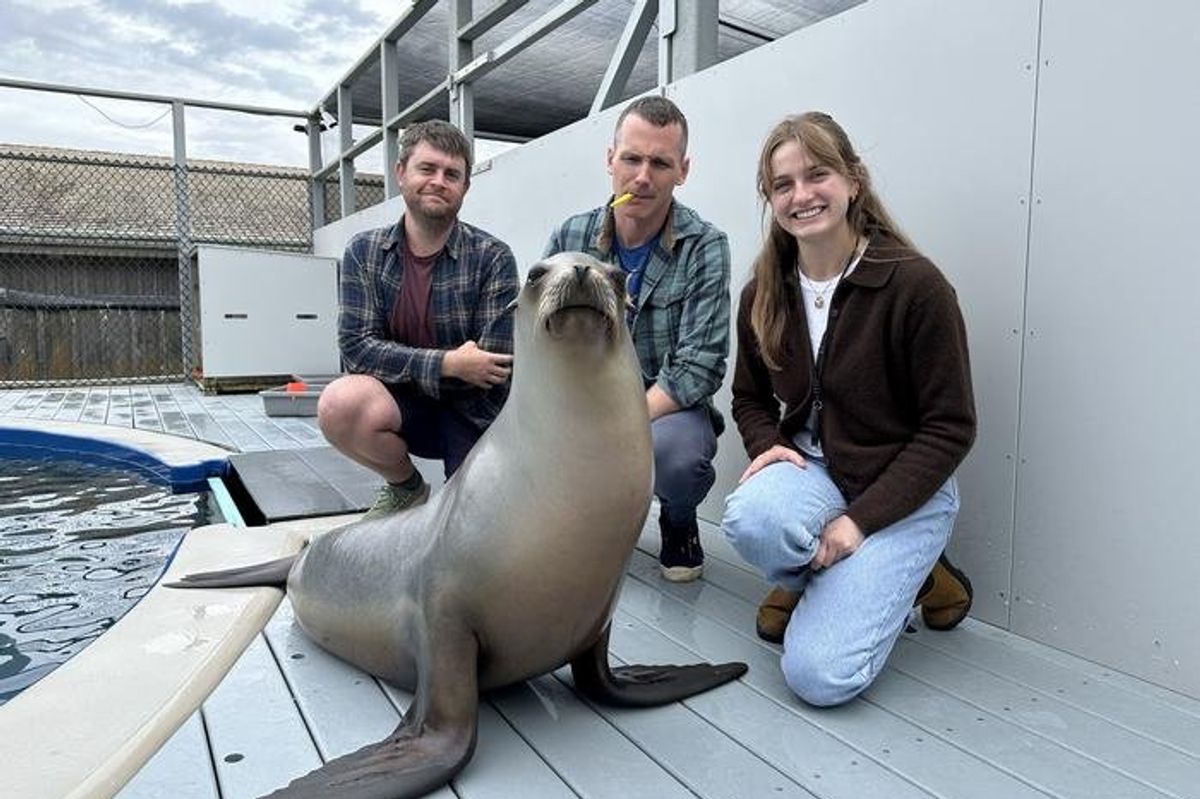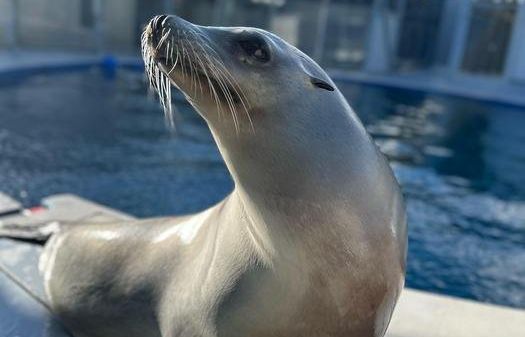Seal's 'incredibly precise' sense of rhythm is more accurate than 99 percent of humans
Ronan the seal is changing how people think about animals and music.

Study co-authors Andrew Rouse, Peter Cook, and Carson Hood with Ronan.
It has long been thought that human beings were the only animals with actual musical ability, at least the type that we can comprehend. However, a groovy sea lion at the University of California, Santa Cruz, is challenging the notion that the ability to keep time is purely a human skill. Moreover, he’s proving that sea lions may be even better at it.
Ronan, a 15-year-old sea lion who was rescued when she was three, lives at the Long Marine Laboratory at UC Santa Cruz. She first caught the public’s attention in 2012 when she showed the ability to keep good time by bobbing her head to a beat. She’s making headlines again because she’s made drastic improvements. “Ronan didn't use to be as precise and consistent as she is now.” Professor Peter Cook, lead author of the study and a comparative neuroscientist at New College of Florida, told BBC Science Focus.
Sea lions are the first non-human mammals to keep a beat.
Meet Ronan, who is demonstrating her rhythmic ability here: pic.twitter.com/QgCqKb6B7i
— 🧜🏼♀️ (@riayasminn) November 8, 2020
In a recently published research paper, Cook and his team set out to see whether Ronan’s time-keeping ability was comparable to that of the average human adult. The team had 10 students rhythmically move their arms to a beat and compared this with Rnan’s performance at three tempos.

The results found that Ronan outperformed the students in accuracy and consistency, landing in the 99th percentile of a model simulating 10,000 humans.
“She is incredibly precise, with variability of only about a tenth of an eyeblink from cycle to cycle,” Cook said in a press release. “Sometimes, she might hit the beat five milliseconds early, sometimes she might hit it 10 milliseconds late. But she's basically hitting the rhythmic bullseye over and over and over again.”
Ronan’s performance is impressive, but some critics argue that she has been rigorously trained to perform the task, making the results misleading. “She definitely wasn’t overtrained,” Cook said. “Realistically, if you added up the amount of rhythmic exposure Ronan has had since she’s been with us, it is probably dwarfed by what a typical 1-year-old kid has heard.”
- YouTubewww.youtube.com
One of the key takeaways from the study was that, when it comes to maintaining rhythm, especially among sea lions, experience plays a significant role. Which is good news for most humans, if you have difficulty dancing or clapping on beat, a bit of practice can be a tremendous help. “One of the most important outcomes of the study is the fact that maturation and experience matter,” UC Santa Cruz research scientist and adjunct professor Colleen Reichmuth said. “It's not just a test of rhythmic performance. It reflects her cognitive behavior and her ability to remember and refine it over time.”
So, if Ronan has the ability, with some practice, to keep rhythm, why is it that dogs can’t dance? “If you're going to say dogs can't dance, you have to empirically assess that—really give the dog many opportunities to receive very precise feedback on rhythmic movement and see how they do,” Cook said. “I would be very surprised if you couldn't get a border collie to do something like what Ronan does if you spend enough time on it.”

